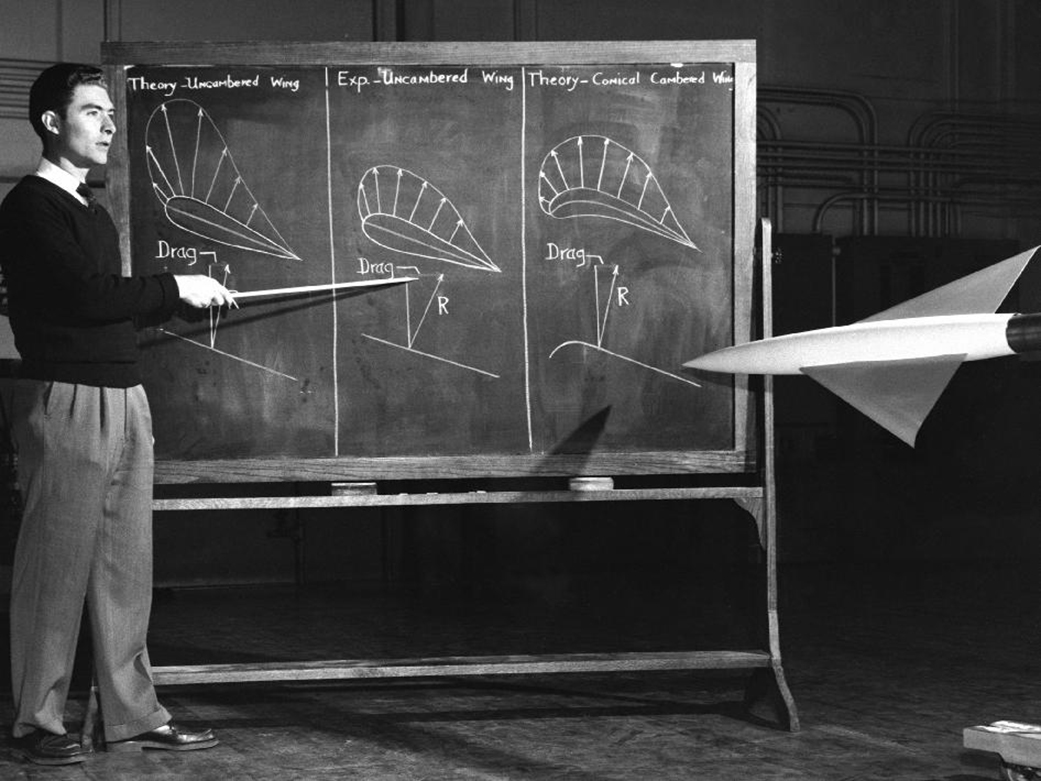This week, John W. “Jack” Boyd retired from NASA’s Ames Research Center in California’s Silicon Valley, the day before his 95th birthday, after 73 years since he began his service in 1947. Jack has been a cornerstone of the Ames community from before NASA existed, starting his career with the National Advisory Committee for Aeronautics, or NACA, when Ames was called the Ames Aeronautical Laboratory. He has served as a mentor and colleague for many at the center throughout the breadth of his career.
“I like people. I like to deal with people,” said Jack. “I like to help them out when they need help, and I like to give them advice.”
He started his career at the 1-by-3 foot supersonic wind tunnel, working alongside the likes of H. Julian “Harvey” Allen. After a couple months to get acquainted with the facility and the group, they gave him the freedom to design his own swept wing.
Experimentally testing theories developed by Ames aerodynamicists R.T. Jones and Charles Hall, Jack began investigating variations of the delta wing. “I said I’d like to test a supersonic model – a triangular wing. They said go do it,” said Jack. “I got a kick-off with very remarkable people, and lucked out with picking the right shape to test. That’s how I got started.”
That shape would soon incorporate a special kind of cone-shaped curve, known as a conical camber, which led to dramatic increases in the efficiency of the supersonic B-58 bomber and fighters such as the F-102 and F-106. That project ended up being his favorite of any in his career.
Jack believes aeronautics will continue to be the “bread and butter” of Ames’ portfolio, but is also excited for the future of the center’s role in space exploration.
“I think we ought to be intimately involved in the exploration of Mars, both in terms of entry system shapes and particularly as things evolve and humans go to Mars,” said Jack. “I think we have both the aerodynamics and human factors expertise at Ames.”
That future will depend upon the next generation of NASA, which Jack has helped to cultivate when he began a second career inspiring students through initiatives such as the Ames Aerospace Encounter.
“Hook onto a mentor or two, they can help it out,” said Jack, when asked what advice he would give to those at the start of their career. “[And] whatever you do, continue your education.”
As well as an engineer and educator, Jack has served as an administrator, mentor, and more, both at Ames and at NASA Headquarters. Throughout all these roles, he has always maintained an optimistic outlook. “I think if you have a healthy outlook on life, you don’t become cynical about much of anything,” said Jack.
He also had some words of advice for the unprecedented times NASA and the nation are facing in light of the COVID-19 pandemic.
“Hang on. You know it’s going to improve, it’s going to be time consuming. It’s been one of the most frustrating periods I’ve ever lived through, myself,” he said. “You’ve got to be a little patient, and try to help out wherever you can to keep expanding and continuing.”
Jack has earned just about every award over the years that NASA can give. There are few careers as long lasting and impactful as Jack’s. The agency and the nation honor him as a member of the NASA family and the highest exemplar of a public servant, and thank him for all he has contributed to NASA and to Ames.
“One should never say they did everything right, and I’m sure I didn’t,” said Jack, when asked if he’d have done anything differently over the course of his career. “But I did everything to the best of my ability that I loved to do. I don’t think I would have been happy going any other way.”
Author: Frank Tavares, NASA’s Ames Research Center
























